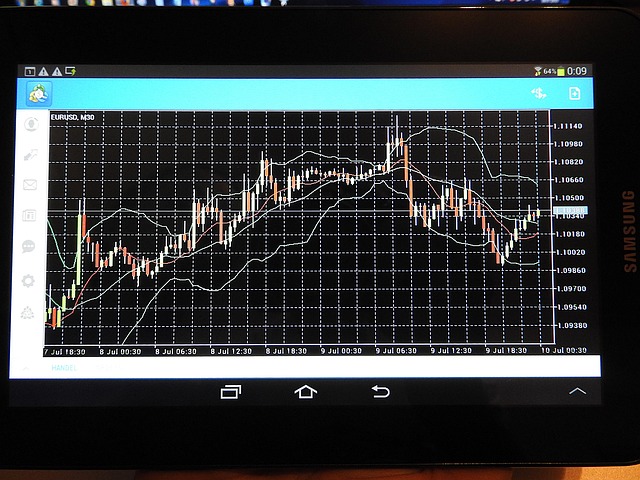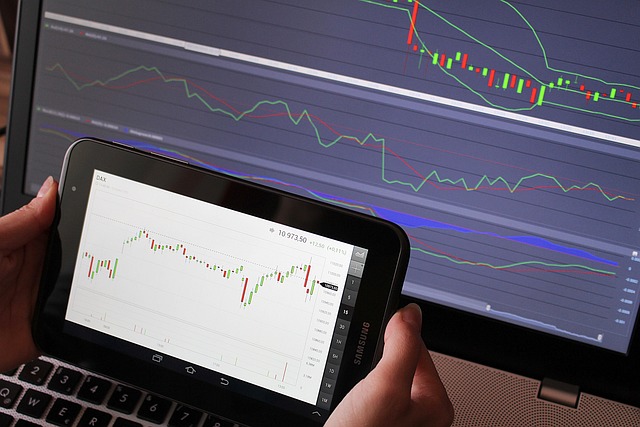MEXC Trading Fees Futures Explained: An In-Depth Analysis for Traders
Author: Jameson Richman Expert
Published On: 2025-08-01
Prepared by Jameson Richman and our team of experts with over a decade of experience in cryptocurrency and digital asset analysis. Learn more about us.
Understanding the trading fees associated with MEXC futures is fundamental for both novice and seasoned traders aiming to optimize profitability and minimize costs. MEXC, recognized for its extensive array of cryptocurrency trading options, offers a competitive fee structure that can significantly influence trading strategies and overall returns. This comprehensive guide provides an in-depth exploration of MEXC’s futures trading fees, compares them with other major exchanges, and discusses how traders can leverage various programs, token holdings, and platform features to reduce costs effectively.

Overview of MEXC Futures Trading: Features and Opportunities
MEXC Global has established itself as a versatile platform, providing users with a broad spectrum of trading instruments, including spot, margin, and futures trading. Its futures contracts allow traders to speculate on the price movements of leading cryptocurrencies such as Bitcoin (BTC), Ethereum (ETH), and a variety of altcoins, with options for both perpetual and quarterly contracts. These contracts often include leverage options—sometimes up to 125x—enabling traders to amplify their positions and potential gains. However, leveraging also amplifies risks, making it critical to understand the associated costs, including trading fees, which can erode profits if not managed properly.
MEXC’s futures trading platform features advanced order types such as limit, market, stop-limit, and conditional orders, providing traders with flexibility to implement diverse trading strategies. The platform also offers risk management tools like stop-loss and take-profit orders, alongside real-time market data and analytical tools to aid decision-making. These features make MEXC an attractive choice for traders looking to capitalize on market volatility while managing their risk exposure effectively.
Dissecting MEXC Futures Trading Fees: Structure and Components
MEXC’s futures trading fee structure emphasizes transparency and competitiveness. The core fee components are primarily categorized into maker and taker fees, reflecting the type of order placement:
- Maker Fees: Charged when a trader places an order that adds liquidity to the order book, such as limit orders that are not immediately filled. Makers help improve market depth and are incentivized with lower fees.
- Taker Fees: Applied when a trader’s order matches existing orders, removing liquidity from the market, typically through market orders. Takers generally pay slightly higher fees due to their market impact.
As of the latest data, MEXC charges a standard fee of 0.02% for makers and 0.05% for takers on futures trades. These rates are notably competitive—often lower than many industry counterparts. The fee rates can vary based on several factors:
- Trading volume over a 30-day period, with higher volumes qualifying for tiered discounts that can reduce fees further.
- Holding MEXC tokens (MX tokens), which can entitle users to additional fee reductions via tiered fee structures.
- Participation in specific promotional or loyalty programs offered by MEXC.
- Engagement in futures trading during promotional campaigns that temporarily reduce or waive fees.
Strategies to Reduce MEXC Futures Trading Fees: Referral Programs & Token Incentives
One of the most effective methods to lower trading costs involves engaging with MEXC’s referral and partnership programs. These programs often provide:
- Registration bonuses for new users signing up via referral links, which may include fee discounts or trading credits.
- Fee discounts for both referrers and referees, which can compound benefits as trading volume increases.
- Trading rewards, including bonus tokens or reduced fees during promotional periods, incentivizing active trading.
For example, new traders can register on MEXC using this link: MEXC Invite Link. By doing so, they often unlock initial fee discounts and trading rewards, effectively reducing costs from the outset. Additionally, participating in the MEXC referral program not only offers immediate benefits but also promotes long-term trading cost savings through cumulative trading volume bonuses.
Furthermore, holding MX tokens can be advantageous. MEXC incentivizes token holders with tiered fee reductions, similar to Binance’s BNB model. The more MX tokens held, the lower the trading fees, sometimes approaching zero for the highest-tier users. This strategy not only cuts costs but also encourages ecosystem engagement and long-term participation, which can be particularly valuable during high-volatility periods where trading activity spikes.

Comparative Analysis of Futures Trading Fees Across Major Exchanges
To contextualize MEXC’s fee competitiveness, it’s vital to compare it with other leading exchanges:
- Binance: Starts at 0.02% for makers and 0.04% for takers, with discounts for high-volume traders and BNB token holders. Binance also offers a tiered fee structure based on 30-day trading volume and BNB holdings.
- Bitget: Offers similar rates, typically around 0.02% for makers and 0.05% for takers, with additional incentives for VIP users and those holding its native BGB token.
- Bybit: Maintains competitive fees, with tiered discounts based on trading volume and native token holdings, often starting at 0.01% for makers and 0.06% for takers for high-tier users.
While fee structures are comparable, the key differentiators include platform-specific features such as leverage options, contract varieties, and promotional campaigns. Effective fee minimization strategies involve leveraging referral codes, participating in loyalty programs, and holding native tokens to benefit from fee discounts, which can significantly impact net profitability.
Factors Influencing MEXC Futures Trading Fees: A Closer Look
Several dynamic factors influence the actual fees paid by traders on MEXC:
- Trading Volume: Higher volumes within a 30-day window often qualify traders for tiered fee discounts, sometimes reducing fees to near-zero levels for top-tier traders. This incentivizes high-frequency and large-volume trading activity.
- Token Holdings: Holding MX tokens can grant access to lower fees through tiered fee structures or promotional discounts, especially during token-specific campaigns that may include bonus rebates or fee waivers.
- Promotional Events: MEXC periodically launches campaigns offering fee waivers or rebates, especially during market volatility, new product launches, or platform upgrades, which can provide significant cost savings.
- Order Types and Market Conditions: Utilizing limit orders (maker) versus market orders (taker) influences fee costs due to the fee differentiation. During volatile periods, traders often prefer market orders, which may increase costs if not managed strategically.
- Leverage Levels: Higher leverage can increase trading risk but may also impact margin requirements and associated fees, especially when using specific margin or futures features with variable fee structures.
Risk Management and Cost Optimization: Balancing Profitability and Safety
While reducing fees can enhance overall profitability, traders must also prioritize risk management, especially in leveraged futures trading where losses can escalate rapidly. Strategies include:
- Implementing Stop-Loss and Take-Profit Orders: To protect against sudden market reversals, minimizing potential losses and locking in gains.
- Proper Position Sizing: To prevent over-leverage, which can lead to margin calls or liquidation, especially in highly volatile markets.
- Timing Trades During Promotions: Engaging during fee-reduction campaigns or high-volume periods to maximize cost savings.
- Holding Native Tokens: To leverage fee discounts while supporting platform ecosystem growth, which may also unlock additional benefits such as early access to new features.
- Utilizing Advanced Order Types: Such as iceberg or conditional orders to optimize execution and reduce unnecessary trading costs.

Deep Dive: Fee Tiers, Loyalty Programs, and Incentives
MEXC employs a tiered fee structure based on accumulated trading volume and MX token holdings, incentivizing traders to increase their activity and ecosystem participation. Typically, the fee tiers are divided as follows:
| Trading Volume (30 days) | MX Token Holdings | Maker Fee | Taker Fee |
|---|---|---|---|
| Less than 10 BTC | Less than 100 MX | 0.02% | 0.05% |
| 10 - 50 BTC | 100 - 1000 MX | 0.015% | 0.045% |
| Above 50 BTC | Over 1000 MX | 0.01% | 0.03% |
Additionally, participating in MEXC’s loyalty programs and promotional campaigns can further reduce fees temporarily, especially during new launches or market surges. Regularly monitoring these incentives ensures traders maximize their cost efficiency.
Final Thoughts: Maximizing Profitability Through Informed Fee Management
An in-depth understanding of MEXC’s futures trading fee structure empowers traders to make strategic decisions that enhance profitability. By combining tiered fee discounts, participation in referral programs, effective risk management, and staying informed about promotional events, traders can significantly reduce costs and improve their trading efficiency. Constantly monitoring fee policies and leveraging platform-specific incentives ensures you capitalize on opportunities to trade smarter, not just harder, in the dynamic landscape of cryptocurrency trading.